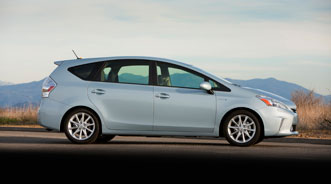Polk: Only 35 Percent of Hybrid Owners Buy in Segment Again

While the selection of hybrid models in the U.S. has more than doubled since 2007, Polk discovered this week that only 35 percent of hybrid vehicle owners choose to purchase a hybrid again when returning to market in 2011.
If repurchase behavior among the high volume audience of Toyota Prius owners isn’t factored in, Polk found hybrid loyalty drops to below 25 percent.
Polk also found that consumers in traditional eco-friendly markets in the U.S. (such as Los Angeles, San Diego, Portland, Ore., and Seattle) are no more loyal to hybrid vehicles than the nation at large.
However, analysts determined hybrid owners appear to maintain brand loyalty when returning to the new-vehicle market.
For example a year ago, Polk indicated 60 percent of Toyota hybrid owners returned to the market to purchase another Toyota, while 41 percent of them purchased another hybrid from any brand.
In the case of Honda hybrid owners, analysts said more than 52 percent of them stayed with the Honda brand, while a little less than 20 percent of this same owner group bought another hybrid vehicle from any brand.
“Having a hybrid in the product lineup can certainly give a brand a competitive edge when it comes to attracting new customers,” noted Brad Smith, director of Polk’s Loyalty Management Practice.
“The repurchase rates of hybrid vehicles are an indication that consumers are continuing to seek alternative solutions to high fuel prices,” Smith continued.
Online cross-shopping data from Edmunds.com showed consumers are doing their due diligence to compare hybrids with similar gasoline-powered vehicles.
As an example, analysts pointed out the Honda Civic is the second most cross-shopped vehicle among both Toyota Prius and Honda Insight shoppers.
Polk pinpointed that hybrid vehicles represent just 2.4 percent of the overall new-vehicle market in the U.S., down from a high of 2.9 percent in 2008.
“The lineup of alternate-drive vehicles and their premium price points just aren’t appealing enough to consumers to give the segment the momentum it once anticipated, especially given the growing strength of fuel economy among compact and midsize competitors,” according to Edmunds.com chief economist Lacey Plache.
“For EVs and PHEVs in particular, certain obstacles — including consumer unease with unfamiliar technology and the lack of an adequate recharging infrastructure — will need to be overcome before sales increase,” Plache projected.
Polk’s research also indicated volatility in fuel prices between 2008 and 2011, which ranged from just below $2 per gallon to nearly $4 per gallon, had little impact on hybrid segment loyalty.
As fuel prices continue to rise, Polk said it will be working closely with its customers to continue to analyze the impact.

 View The Latest Edition
View The Latest Edition

